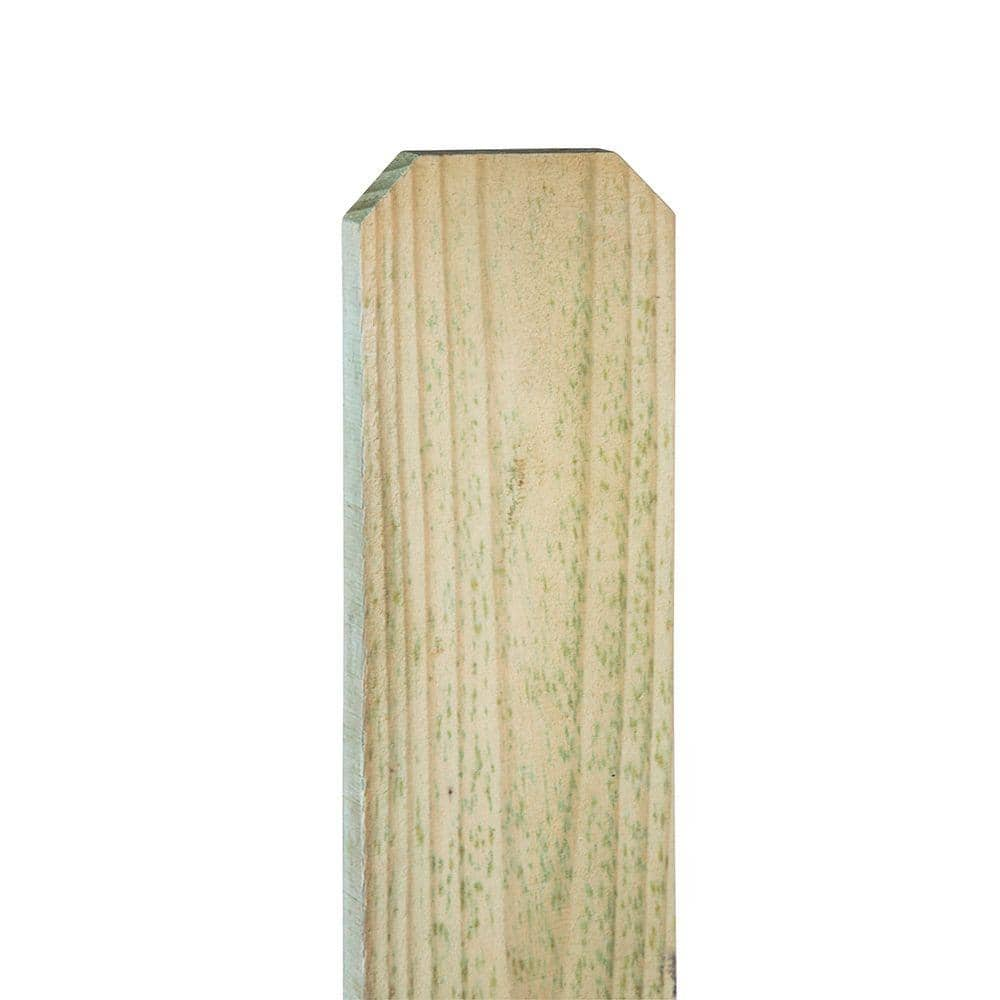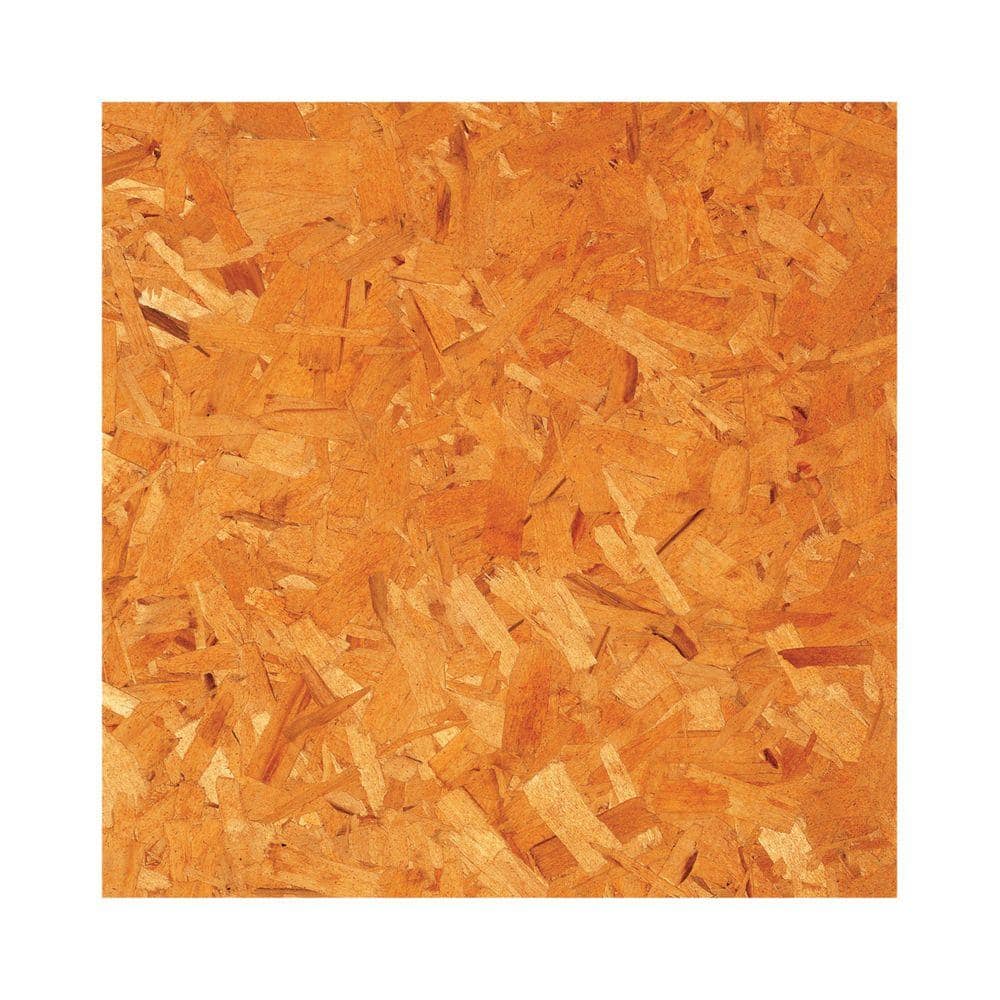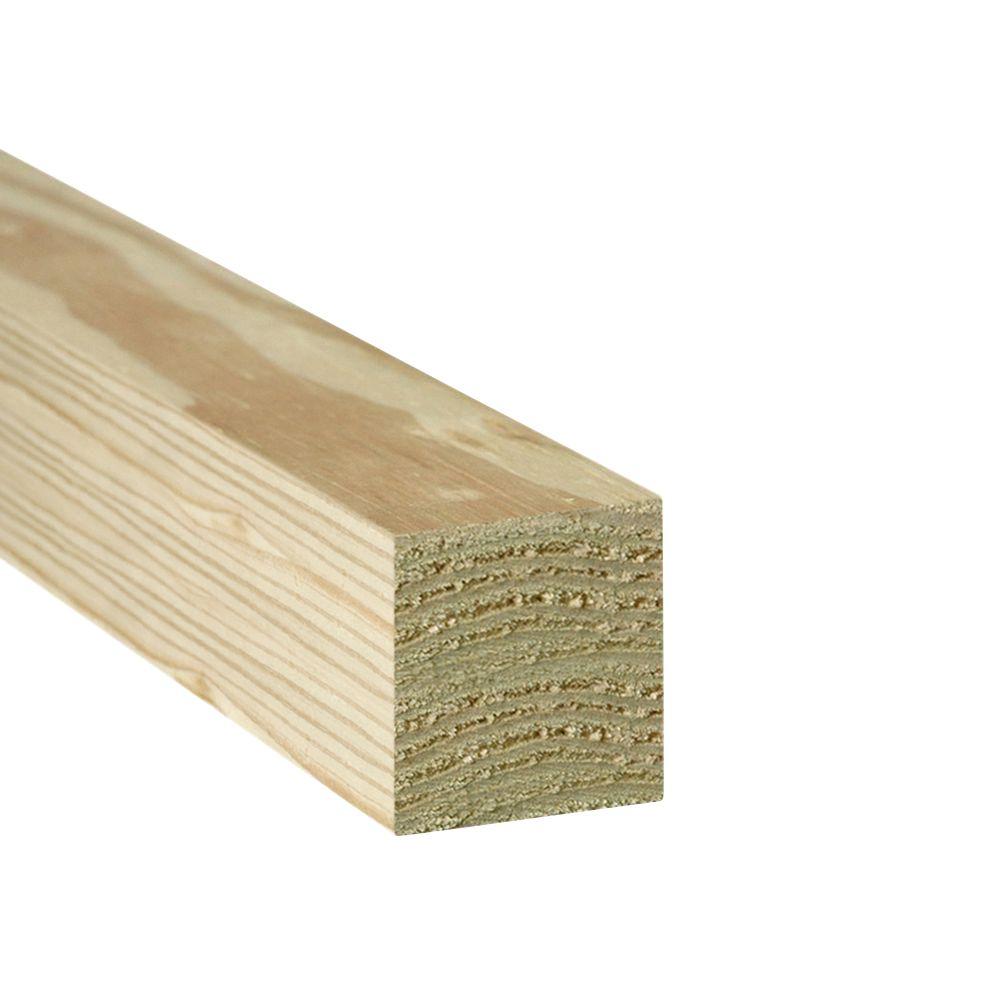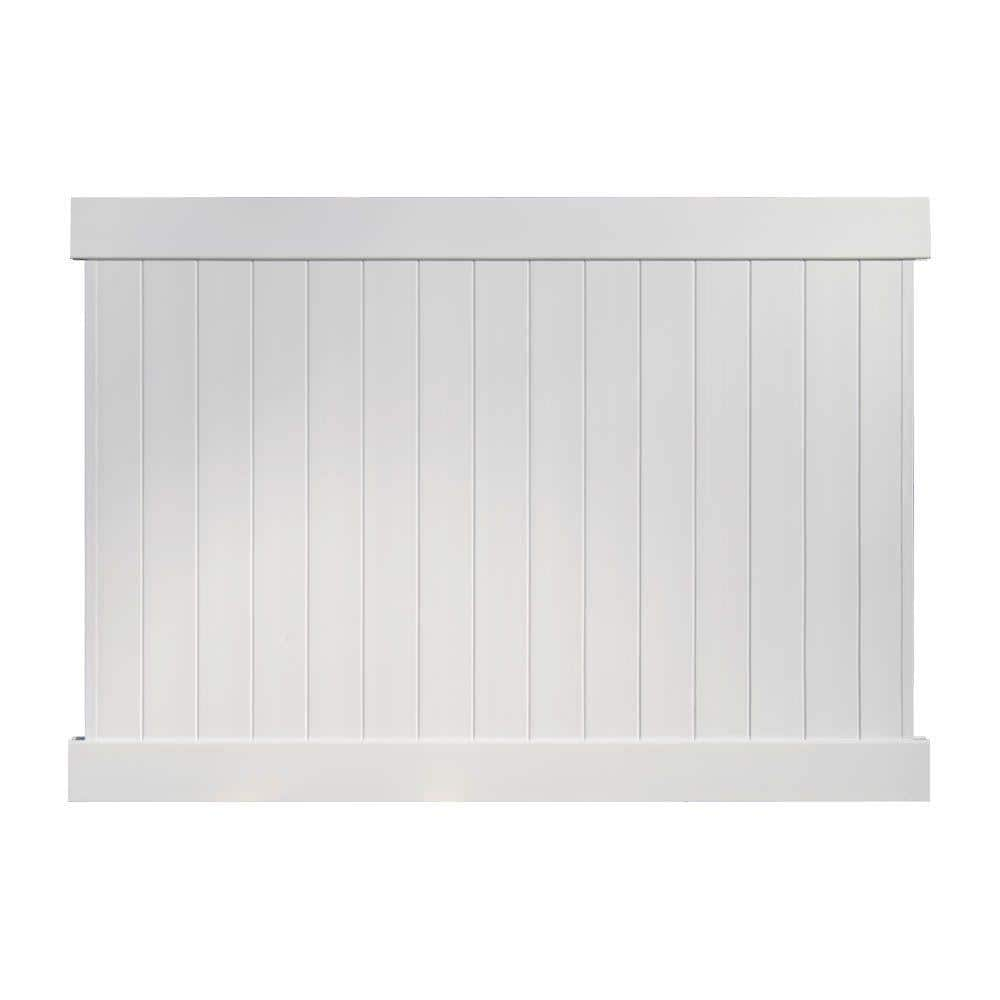Unbranded 5/8 in. x 5-1/2 in. x 6 ft. Pressure-Treated Pine Dog-Ear Fence Picket
Treated to resist insects, rot and decay. Neighbor-friendly design adds beauty to your home and yard. Ideal for building a new fence or repairing an existing fence.
The 6 ft. x 5-1/2 in. x 5/8 in. Pine Dog-Ear Picket is made from pine for durable, long-lasting performance. This all-wood picket is 6 ft. long. It has a classic dog-ear pattern that can add charm to almost any outdoor space. It is paintable and stainable to match with your exterior decor. You can use it for outdoor applications including picket fences and gardens.
- Traditional dog-ear design adds a beautiful appearance
- Pressure-treated to protect against rot and decay
- Can be painted or stained to suit your preference
- For use in above ground applications
- Ideal for any fence repair
- Can be used in a variety of commercial or residential applications
- Note: product may vary by store
Additional information
| Actual picket height x thickness x width (in.) | 72 x 0.625 x 5.5 |
|---|---|
| Nominal picket height x thickness x width (in.) | 6 x 0.63 x 6 |
| Product Width (in.) | 0 |





by Michael
Not bad for the price.
by Jack
5 out 420 could not be use All other was good.
by Mike
Great price and they were all straight some of the cuts on the dog ears are off and not even but close enough for a normal eyes view.
by Alice
good slats, no giant knots or splits.